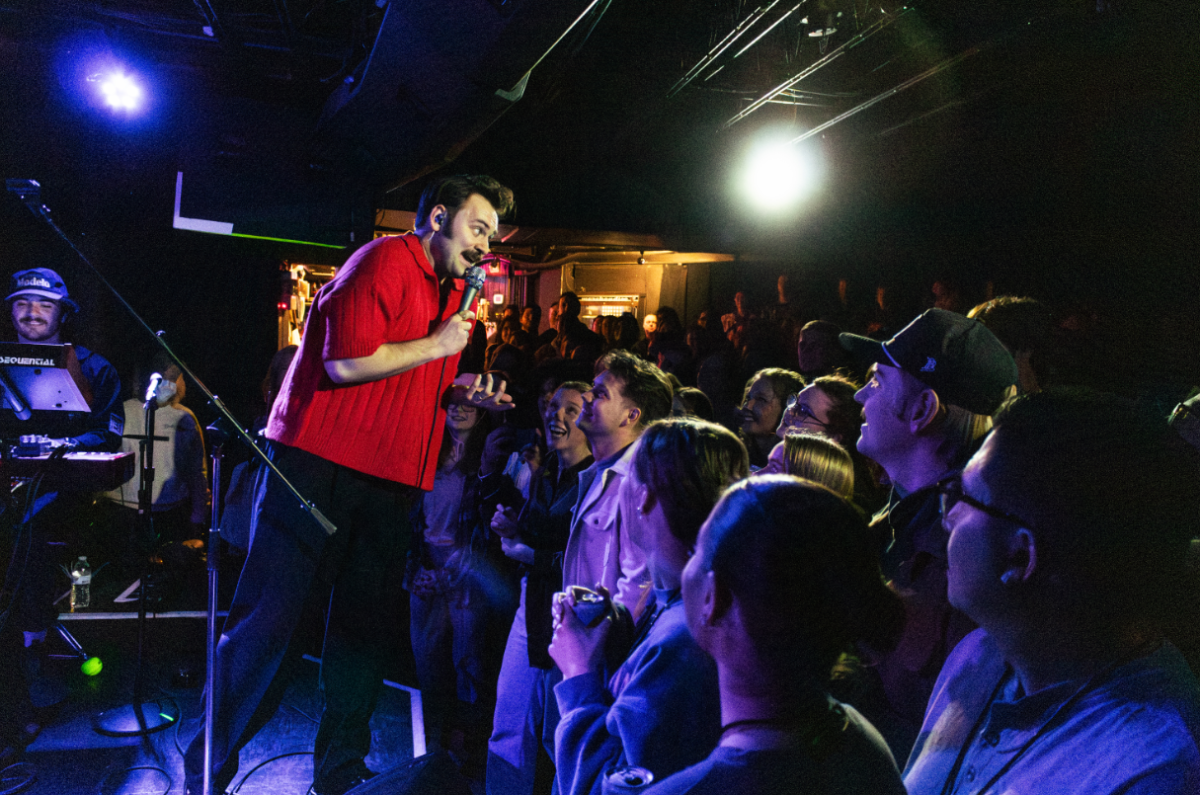From their sterile, quiet environments to their contents -documents and records from the past — archives aren’t places typically associated with vitality.
But that doesn’t mean their subjects weren’t very much alive, once upon a time.
The Elmer L. Andersen Library exhibit Archiving Memories challenges viewers to rethink their perceptions about the power of photography. With a little installation creativity, 12 pictures of Viennese Holocaust survivors, both Jews and Gentiles, take on new life.
The exhibit, a creation of curator Nancy Ann Coyne and architects William F. Conway and Marcy Schulte, uses natural light to transform the building’s windows into canvases. Every one of the 12 windows, four on each of Andersen’s three floors, is covered with a massive, translucent photograph, circa 1936-47. Visible from inside and outside the building, the portraits’ appearance varies depending on the time of day, and the amount of light shining through them.
Each 5-foot tall likeness is accompanied by a personal quote detailing the occasion for the photo or how the photograph survived the war.
The lengths to which many of the survivors went to save the pictures demonstrate how meaningful photographs were, from candid snapshots to family portraits, especially in an era before digital cameras and Adobe Photoshop.
The personal nature of the oral excerpts and photos, collected by an independent source as part of a larger project, is augmented by the exhibit’s placement in a public space. Not in an isolated room, but along an open staircase, individuals cannot help but notice the exhibit upon entering the library.
Accompanying the photographs and quotations is a corresponding annotated timeline of events occurring in Austria during World War II and surrounding years. The little-known history of Austria (and specifically Vienna) during this period will be interesting in its own right for some.
For example, the notes accompanying the timeline allude to Vienna’s failure to acknowledge its persecution of its own Jewish citizens. Instead, Coyne’s commentary indicates, the city portrayed itself merely as a victim both during and after the war.
Though a major strength of the exhibit is the elegance of its display, this alone does not account for its overall poignancy, nor does its unique use of public space.
Instead, its emotional impact is ultimately achieved through its limited scope. By focusing on only 12 subjects and specifically limiting the focus to Viennese survivors of World War II, an overwhelming subject – the Holocaust – becomes approachable.
“Archiving Memories” reminds us that even with subjects that have been explored for more than a half-century, there will always be more stories to discover.
That’s why we have archives, after all.







